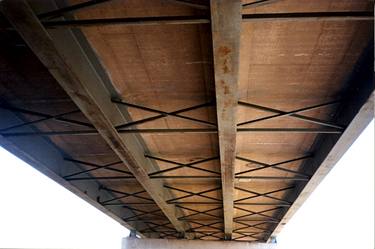
Rolled Steel Beams.
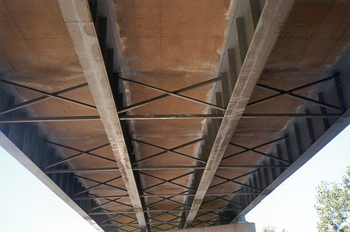
Built-up Plate Girders (note vertical stiffeners attached to webs).
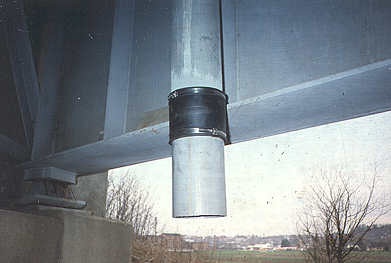
Extension of Scupper Pipe to minimize splashing of water on beams.
STEEL BEAMS
Most steel beam bridges in Ohio consist of four or more lines of beams which are continuous over the piers (no joints except at the ends/abutments). The steel beams consist of either rolled, wide flange beams or built-up girders (for longer spans) made up of flanges, webs and stiffeners welded or riveted together. It is important to recognize the difference between rolled beams and built-up girders.

Rolled Steel Beams. |

Built-up Plate Girders (note vertical stiffeners attached to webs). |

Extension of Scupper Pipe to minimize splashing of water on beams. |
Rolled beams are easier to maintain because:
The webs are an integral part of the flanges in that the beams are rolled out of one piece of steel and the webs are significantly thicker than built-up girder webs.
The beams have smoother lines with no stiffeners to trap moisture and debris on the bottom flange.
Built-up girders are more vulnerable to deterioration because:
They have relatively thin webs (some as thin as 7/16") which can corrode through fairly quickly once corrosion begins.
The large number of stiffeners needed to stiffen the relatively thin webs trap debris and moisture on the bottom flange and are more difficult to paint because of all the pockets.
Riveted girders (see below left) are made up many plates and angles sandwiched together and held with rivets to form thicker flanges (note: riveted girders are no longer manufactured, but many were built as part of the Interstate construction program and still have to be maintained).
These sandwiched plates have many crevices which allow moisture to collect and once corrosion begins, is very difficult to stop.
The more modern, welded girders (see below right) do not have the problems that riveted girders have, but they still have thin webs and many of the early designs (late 1950s to early 1980s) have weld details which are prone to long-term fatigue cracking.
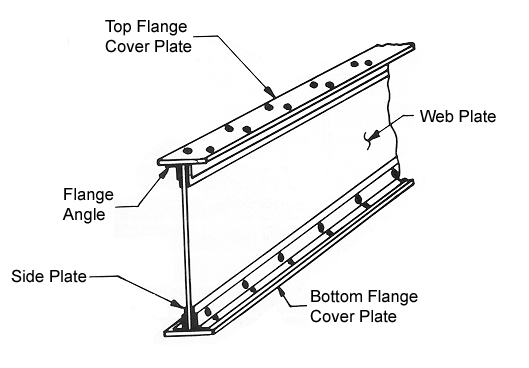
Riveted Girder. |
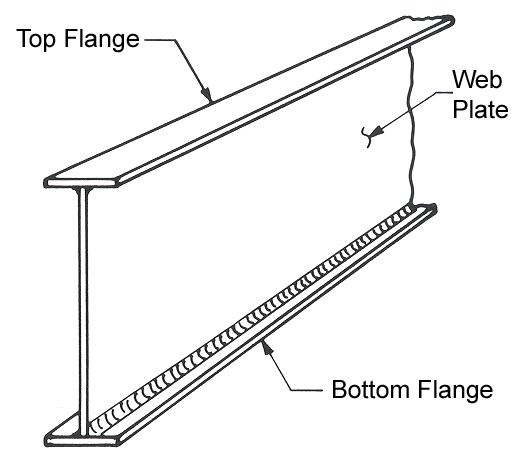
Welded Girder |
Preventive Maintenance Recommendations:
Pressure wash the beams/girders once per year in the spring if possible, especially overpasses where salt spray from traffic passing below can collect on the steel (this is very difficult to do and perhaps not practical in some cases, but is very beneficial in the long run). Even if the entire bridge cannot be washed, at least wash areas under expansion joints (usually at abutments).
Touch up minor defects in the paint system such as scratches and small areas of corrosion with a good quality epoxy/urethane or acrylic paint (there are several water-based acrylic paints available for industrial applications).
On overpass-type bridges, watch for nicks or gouges in the bottom flange caused by overheight traffic passing below. These should be ground smooth with an angle grinder to minimize crack propagation. More serious damage caused by overheight load collisions such as bent beams should be repaired by heat straightening (see Repair Section of this manual).